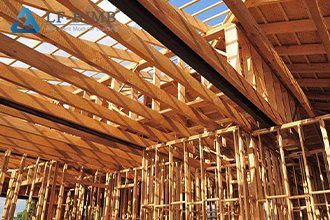
Steel and wood structures each have their advantages and disadvantages, and the choice of which one is better depends on the specific application scenario and needs.
The advantages of steel structure include high strength, lightweight, good seismic performance, and durability. In addition, steel structure components can be prefabricated for production and on-site installation, which makes the construction fast and meets the requirements of industrialized production. Meanwhile, steel can be recycled to reduce the generation of construction waste and have a low environmental impact. Therefore, steel structure is widely used in industrial, commercial, and public buildings.
The advantages of wood structure include easy processing, high plasticity, and light and soft texture. In addition, wood has excellent thermal and thermal insulation properties, which can save energy consumption. The wood structure also has good sound insulation and decorative properties, which makes it suitable for residential and villa buildings.
In contrast, the disadvantages of steel structure are its poor fire resistance, high anti-corrosion requirements, and higher cost. The disadvantages of the wood structure are its susceptibility to moisture, deformation, pests, and fire.
In summary, the choice of which is better, steel or wood needs to be evaluated and selected on a case-by-case basis. In the case of needing to bear large loads, requiring strong seismic capacity and long service life, you can choose steel structure; in the case of needing natural style, environmental sustainability, and good thermal insulation performance, you can choose wood structure.











 About Us
About Us 2024-02-02
2024-02-02


